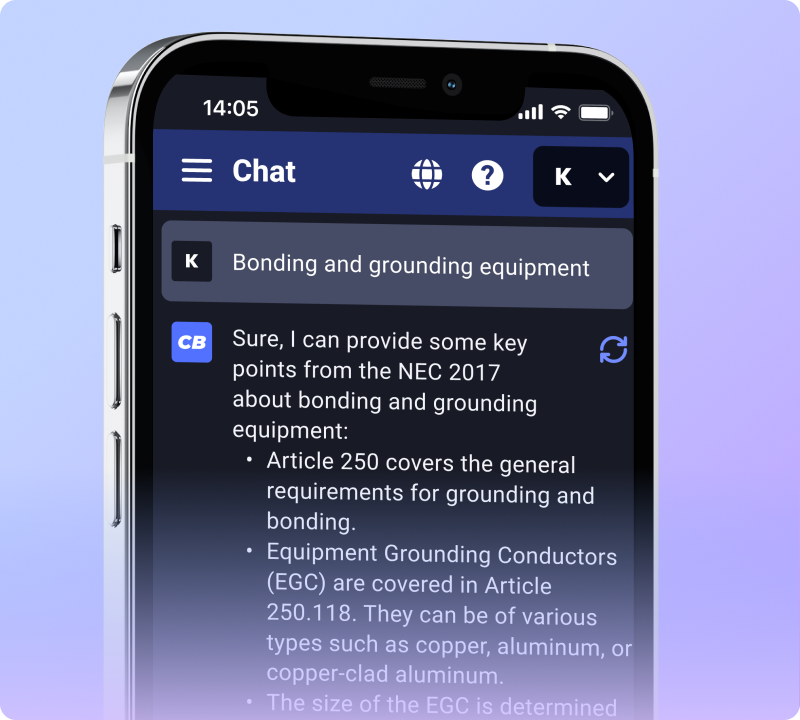Dealing with electrical problems can be challenging. One important tool is the three phase breaker. This article will explain how it helps in keeping electrical systems safe and efficient.
Keep reading to learn more!
Key Takeaways
- Three-phase breakers protect electrical systems from overload and short circuits by opening all phases if the current exceeds a set limit, like 32 amps.
- They come in various types including standard, main breaker, and interruption type, each serving different electrical needs.
- Surge protection devices and inverters play crucial roles alongside three-phase breakers in maintaining system efficiency and protecting against voltage spikes.
- Certification is vital for ensuring three-phase breakers meet safety and performance standards. Electricians need to ensure compatibility with other equipment when selecting breakers.
- Load requirements are essential in choosing the right three-phase breaker to handle the specific currents of each phase effectively, with typical system voltages reaching around 415 volts.
What are Three Phase Breakers?
Three phase breakers provide reliable overcurrent protection in electrical systems. These devices come in various types and configurations, making them suitable for diverse industrial applications.
Definition
Three-phase breakers are essential in electrical systems. They protect against overload and short circuits in three-phase power setups. A three-phase system delivers three alternating currents through separate conductors.
These currents rise and fall at different moments within each cycle.
A three-pole circuit breaker is suitable solely for three-phase systems unless specified otherwise. These breakers ensure that if the current in any phase exceeds a set limit, such as 32 amps, all phases will open simultaneously.
This design enhances electrical safety and offers reliable fault protection.
Effective protection starts with the right breaker.
Types (standard, main breaker, interruption type)
Three-phase breakers come in various types, each catering to different electrical needs. Electricians must understand these types to select the right breaker for their systems.
- Standard Type
Standard three-phase breakers protect against overload and short circuits. They operate efficiently in industrial settings where high power demands exist. These breakers can handle significant amperage, ensuring safety for connected equipment.
- Main Breaker Type
Main breakers serve as the primary protection device for an entire electrical system. They disconnect all three phases simultaneously if a fault occurs. In many cases, these breakers are essential for larger facilities that require reliable and efficient power distribution.
- Interruption Type
Interruption type breakers provide additional safety features by quickly cutting off current during unforeseen events. This rapid response helps prevent damage from overcurrents or faults in three-phase circuits. Electricians value this type for its ability to minimize risks in critical operations.
Understanding these types enables electricians and electrical professionals to effectively manage three-phase power systems.
Maximum amperage
Three-phase breakers manage maximum amperage to protect circuits efficiently. If the current exceeds a set limit, such as 32 amps, the breaker opens all phases. This action prevents overload and potential damage.
Breakers can handle significant loads in industrial and commercial applications, providing stable power. Voltage for three-phase systems typically reaches 415 volts, supporting high power requirements for motors and machinery.
In residential settings with greater demands, three-phase power also finds use. Electricians must select breakers that match the specific amperage needs of the system.
Mounting type
Mounting type plays a significant role in the functionality of three-phase breakers. Electricians choose between several mounting options, such as panel-mounted or din-rail mounted breakers.
Panel-mounted breakers secure directly to the main electrical panel. They often provide a compact solution for smaller installations. Din-rail mounted breakers attach to a rail system in larger setups, allowing for easy installation and maintenance.
Three-phase breakers must fit within specific voltage and amperage ratings. The voltage for three-phase power typically reaches 415 volts. Electricians need to ensure that the mounting type aligns with the electrical components used in the installation.
Each mounting type offers distinct advantages based on the application. Understanding these differences helps professionals choose the right breaker for their needs.
Next, we will explore how three-phase breakers protect against overload and short circuits.
Voltage
Three-phase power commonly operates at higher voltages than single-phase systems. For example, three-phase voltage often reaches 415 volts. This higher voltage allows for more efficient power transmission.
It reduces energy loss over long distances. Electricians use three-pole circuit breakers in three-phase systems to manage these voltages. Each pole in the breaker handles one phase.
This setup ensures that if the current exceeds a limit, such as 32 amps, the breaker opens all phases simultaneously. Proper use of three-phase breakers safeguards equipment from damage caused by overcurrents or faults in the three-phase circuit.
How Do Three Phase Breakers Work in Electrical Systems?
Three phase breakers protect electrical systems from overloads and short circuits. They ensure efficient operation in high-voltage environments, maintaining system stability and safety.
Protecting against overload and short circuits
Three-phase breakers protect electrical systems from overload and short circuits. They operate by monitoring the current in each phase. If the current exceeds a set limit, such as 32 amps, the breaker opens all phases.
This action prevents damage to equipment in three-phase systems.
In high-voltage systems, three-phase breakers enhance efficiency and safety. Their ability to manage larger power demands makes them ideal for industrial and commercial applications.
By ensuring that all three phases work together, these breakers offer reliable protection against faults.
Efficiency in high-voltage systems
Three-phase power efficiently handles high-voltage systems. This system provides three alternating currents on separate conductors. Each current increases and decreases at different times, which ensures consistent power delivery.
With three-pole circuit breakers, electricians protect against overloads and faults. These breakers should open all phases if any current exceeds 32 amps. Using a three-phase breaker helps prevent damage from overcurrents in the circuit.
High-voltage applications often rely on three-phase power for smoother operation. Efficiency in high-voltage systems is crucial for industrial and commercial applications. Surge protection and inverters also play important roles in these systems.
Factors to Consider When Choosing a Three Phase Breaker
When choosing a three-phase breaker, consider the load requirements carefully. Assessing certification and compatibility with other equipment will ensure optimal performance in your electrical system.
Load requirements
Load requirements play a crucial role in choosing three-phase breakers. A three-phase system operates with three alternating currents. Each phase needs to handle specific currents effectively.
For example, if any phase exceeds 32 amps, the breaker must open all phases to ensure safety. This design protects against overloads and short circuits. Three-phase power often supplies higher voltage, typically around 415 volts.
Properly assessing load requirements ensures the breaker can handle the electrical needs of motors and machinery.
Evaluating these factors helps electricians select the right equipment. Compatibility with other components is essential for optimal performance.
Certification
Certification plays an essential role in the selection of three-phase breakers. It ensures that these breakers meet industry standards for safety and performance. Three-pole circuit breakers, suitable for three-phase systems, must have proper certification to work effectively.
This certification verifies that the equipment can handle the voltage, which often reaches 415 volts in three-phase applications.
Choosing a certified three-phase breaker helps prevent damage to electrical systems. A certified breaker protects against overcurrents or faults in the circuit. Electrical maintenance relies on these certified devices to ensure smooth operation.
Electricians can trust certified breakers to function safely in industrial, commercial, and certain residential settings.
Compatibility with other equipment
Choosing the right three-phase breaker goes beyond certification. It also involves ensuring compatibility with other equipment. Three-phase power systems often operate at higher voltages, typically around 415 volts.
This voltage must match the requirements of all connected devices.
Using a three-pole circuit breaker ensures proper functionality in three-phase systems. These breakers protect against overloads and short circuits, making them essential in industrial and commercial applications.
They must also work well with inverters and surge protection systems. Installing a compatible breaker boosts efficiency and reduces the risk of equipment damage.
The Role of Surge/Lightning Protection and Inverters with Three Phase Breakers
Surge protection guards electrical systems against unexpected spikes in voltage. Inverters help optimize the performance of three phase systems, ensuring smooth energy conversion and distribution.
Importance of surge protection
Surge protection plays a crucial role in electrical systems. It shields equipment from voltage spikes caused by lightning or power surges. Three-phase systems are especially vulnerable due to their high voltage, often reaching 415 volts.
A voltage spike can damage sensitive devices and disrupt operations.
Using surge protection devices helps maintain system efficiency and longevity. These devices prevent overcurrents from reaching equipment and causing faults. Electricians should prioritize installing surge protection in three-phase systems.
This simple step can protect against costly repairs and downtime.
Role of inverters in three phase systems
Surge protection plays a vital role in safeguarding electrical systems. Inverters complement that protection in three-phase systems. They convert direct current (DC) into alternating current (AC), ensuring smooth operation.
Inverters make it possible for three-phase power to function effectively, especially in industrial and commercial applications.
Three-phase power supplies three alternating currents on separate conductors. This setup supports motors and machinery, allowing for better performance. With inverters in place, the system can manage varying loads efficiently.
They also enable the use of renewable energy sources, such as solar power, in three-phase setups. Inverters help maintain balance and stability across all phases.
Conclusion
Three-phase breakers play a critical role in electrical systems. They protect equipment from overloads and shorts. This protection helps maintain efficiency and reliability. Choosing the right breaker ensures safety and compatibility.
Understanding their function empowers electricians to create safer and more effective systems.
FAQs
1. What is the role of three-phase breakers in electrical systems?
Three-phase breakers, also known as threepole breakers, play a crucial role in power generation and distribution within electrical engineering. They help manage and control the flow of electricity in three-phase systems.
2. How does Simulink control contribute to the functioning of three-phase breakers?
Simulink control is a vital tool used by electrical engineers to monitor and adjust the operations of three-phase breakers effectively. It aids in maintaining stability and efficiency within power generation systems.
3. Why are threepole breakers important for power generation?
Threepole breakers ensure that electricity flows smoothly through all parts of an electrical system during power generation. This prevents overloads or short circuits which could potentially harm both people and equipment.
4. Can you explain more about how threephase systems work with these types of circuit-breaker?
In a nutshell, threephase systems divide electric power into three equal phases which then flow continuously through separate conductors within the system – all regulated by the threepole breaker for optimal operation.




